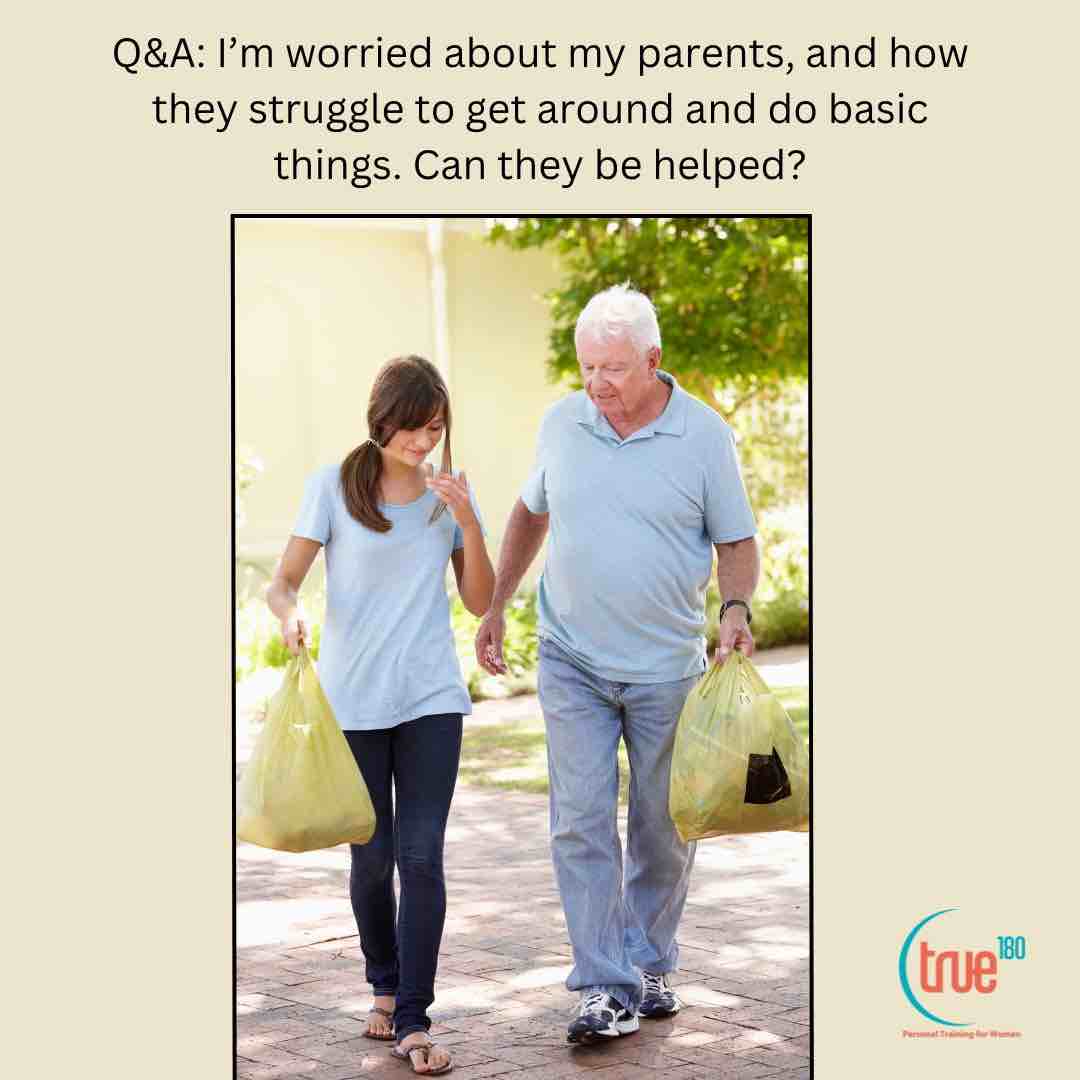Q&A: I’m worried about my parents, and how they struggle to get around and do basic things. Can they be helped? What’s the simplest way to get them started?
A: These are very important questions. The short answers are (1) Yes! And, the lower your starting fitness the easier and faster you can progress. (2) if you could only trust them to get one thing done, it would be single arm farmer’s walks, and if more I’ll cover that as well.
It’s Never Too Late
The less fit you are the more responsive your body is to any sort of exercise. So, the lower your parents initial fitness level, the easier it is to improve.
Additionally, age is not a barrier to improving fitness, but, rather a reason to improve fitness. In other words, the older you are the more important fitness is for any sort of quality of life, and to not be a burden on the people you care about. Are you more tired and do you have more discomfort as you age? Yes, and it sure beats the alternative. On the other hand you generally have more free time as you age, and the importance of time can’t be overstated.
Lastly, we have research on people into their 90’s showing that strength, endurance, bone density, blood pressure, balance, walking, etc can all be improved with consistent and challenging exercise. If you’re still alive, you can get better.
Only One Exercise:
This isn’t one of those silly articles where I tell you “if you could only do one exercise for the rest of your life…” that’s such a dumb premise. Why would anyone be limited to one exercise until death? The one thing to get started with is useful because it’s easy for your parents to remember, not because it’s the only thing they should ever do.
#1. Single arm farmer’s walk.
What is it? Carrying a heavy weight in one hand in multiple positions.
Heavy is relative to the person, but it should be effortful. 10 pounds would be the minimum, and their hand muscles will tell you the limit.
Why?
· Improve balance: our balance gets better with challenge, and progressively worse without. Having the weight on just one side of your body pulls you off balance so you’re constantly fighting this force, and often on one foot because you are walking.
· Improved grip: improved grip = reduced blood pressure, and reduced odds of dying from anything (researchers call this “all cause mortality”). You improve your grip strength and endurance because you are carrying something heavy for a long period of time.
· Improved posture: just like we improve our balance by challenging it, we improve the strength and endurance of our postural muscles by challenging them. Holding a heavy weight and walking is hard work on your shoulders, mid back, arms, low back stabilizers, hip and foot muscles.
· Improved bone density – especially though spine, hips and legs. Our skeletons rise or fall to the level of demand we place on them. Our bones stay and/or get strong because they have lots of force pushing down on them. On the one hand you have the heavy weight, and on the other you have gravity and walking stimulating your skeleton, unlike what happens in water aerobics.
· Improved endurance – because you only hold the weight in one hand, you can keep switching off as your hands get tired, but you don’t need to stop moving. This keeps your heart and lungs working hard for a long period of time, but is also going to be a better place to start than something like running.
· Simplicity – this is about the easiest exercise to remember, and the only way to do it wrong is to go easy.
How?
· Hold a heavy weight in your left hand and walk for 30-60 seconds, trade hands and repeat. Start with 10-15 minutes. Push to 20 minutes in total if this is all they’re doing.
· Getting fancy: you can add some period of time where they go up and down a step, or something shorter than a step if a full sized step is currently too high.
· Fancier still: half the time the weight can be at shoulder height, and the other half down at side. This would be 30s left shoulder, 30s left side, then repeat right. This is 2 min per round.

Crucial
Our bodies adapt to the activities we perform, and, even more so, to what we avoid. What I mean is that when we make our parent’s lives easier their bodies respond by getting weaker and the activity that was hard becomes impossible.
Stairs are a great example: many people deal with the difficulty of going up and down stairs by creating a life where they can completely avoid them. It’s usually just a matter of weeks until the ability to go up and down the stairs goes from hard to literally impossible. Avoiding stairs is comfortable, but it’s also not progress. The problem has not been solved, but exacerbated by avoidance. Generally speaking, whatever we do now to avoid difficult or strenuous activities is paid for in future health and safety.

